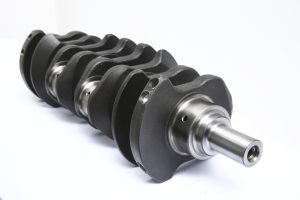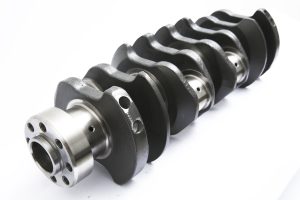Crankshaft seals play an essential role in the operation of gasoline automotive and motorcycle engines. They serve to maintain the integrity of the engine by preventing oil leaks and protecting internal components from contaminants. In this article, we will discuss the functions, advantages, and user experiences of crankshaft seals and delve into the various classifications, materials, and manufacturing processes of crankshafts designed exclusively for gasoline engines.
Functions of Crankshaft Seals: Crankshaft seals are designed to keep engine oil inside the crankcase while preventing dust, dirt, and other contaminants from entering. By maintaining a tight seal, these components ensure proper lubrication of the crankshaft and other moving parts, thus promoting optimal engine performance and longevity.
Advantages of Crankshaft Seals: The use of high-quality crankshaft seals offers several benefits. These include:
- Improved Engine Performance: A well-sealed engine experiences reduced friction, resulting in better power output and fuel efficiency.
- Extended Engine Life: By preventing oil leaks and contamination, crankshaft seals help protect the engine’s internal components from premature wear and damage.
- Reduced Maintenance Costs: A well-maintained crankshaft seal minimizes the risk of costly repairs and engine breakdowns.

User Experiences with Crankshaft Seals: Many users have reported positive experiences after replacing worn or damaged crankshaft seals in their gasoline engines. They have noticed improved engine performance, reduced oil consumption, and fewer issues related to oil leaks. Regular maintenance and timely replacement of crankshaft seals can lead to a more reliable and enjoyable driving experience.
Crankshaft Classifications: Crankshafts designed for gasoline engines can be classified based on their design and construction. Two common types are flat-plane and cross-plane crankshafts. Flat-plane crankshafts are typically found in high-performance engines, while cross-plane crankshafts are more prevalent in V8 engines, offering better balance and reduced vibrations.

Crankshaft Materials: Crankshafts are usually made from cast iron, forged steel, or billet steel. Cast iron crankshafts are cost-effective and suitable for low-performance engines. Forged steel crankshafts provide increased strength and durability, making them ideal for high-performance applications. Billet steel crankshafts are custom-made for specific applications, ensuring the highest level of strength and precision.
Crankshaft Manufacturing Processes: The manufacturing processes of crankshafts include casting, forging, and machining. Casting is a budget-friendly method suitable for mass production. Forging offers improved strength and durability, while machining ensures precise dimensions and surface finishes.
In conclusion, understanding the role of crankshaft seals and their advantages in gasoline engines is crucial for optimal performance and maintenance. By exploring the classifications, materials, and manufacturing processes of crankshafts, you can make informed decisions about your engine’s components and enjoy a smoother, more reliable driving experience.